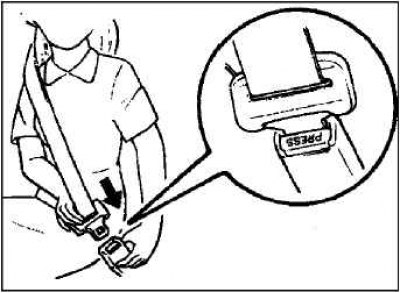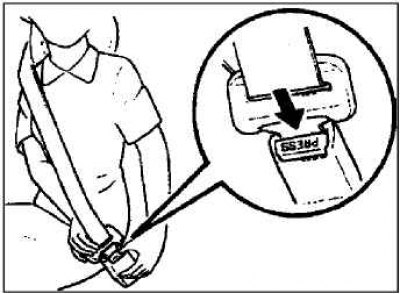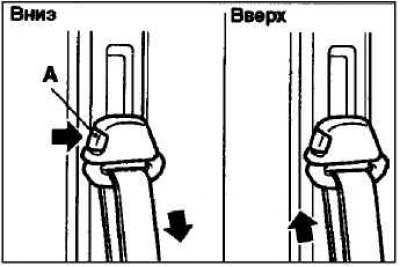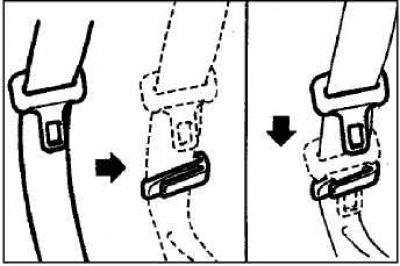Fastening the seat belt

Pull the belt out slowly and smoothly, holding it by the bar (latch tongue).
Tighten the belt slightly to remove any slack.
Note. If the seat belt cannot be pulled out because it is blocked, pull firmly on the belt once and release it. After that, try again to smoothly pull out the belt.
Insert strap strap (latch tongue) into his lock until it clicks.
Warning! Never wear the seat belt across your abdomen. This position of the belt in the event of an accident increases the risk of injury, because. the belt can cut sharply into the stomach.
Fastened seat belts must not be twisted.
Releasing the seat belt

Grab the plank (latch tongue) and press the button on the buckle.
Note. Since the belt will retract automatically, hold the latch tab so that the belt retracts smoothly. Failure to follow this rule may result in damage to the vehicle.
Adjustable harness anchors (front seats)

The height of the seat belt attachment can be adjusted. The seat belt anchor can be moved downwards by holding down lock button A. To move the seat belt upwards, lock button A does not need to be pressed.
Attention! When adjusting the seat belt fastening, set it at a sufficient height to ensure that the belt is firmly in contact with the shoulder and at the same time that the belt does not touch the neck.
Storing the rear seat belts

When the rear seat belt is not in use, store it as shown in the illustration.
To store the seat belts when not in use, you can also use the special holders A.

Pull the strap through the inner fastening groove, and then insert the latch tab into the outer fastening groove.
Seat belt pretensioner and energy limiter
The driver's and front passenger's seats are equipped with seat belts that have a pretensioner mechanism (pretensioners).
